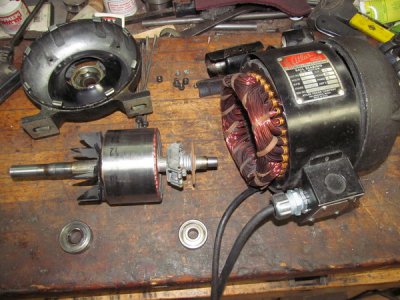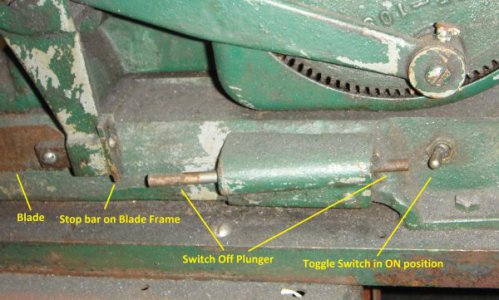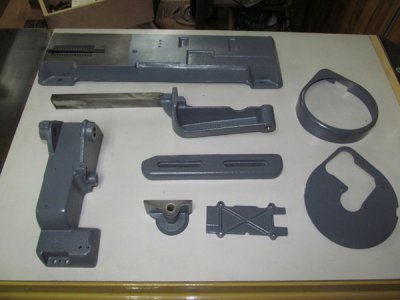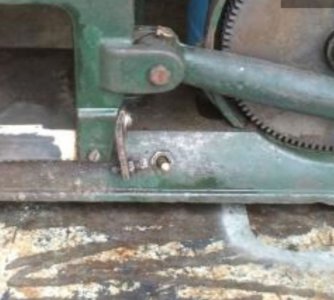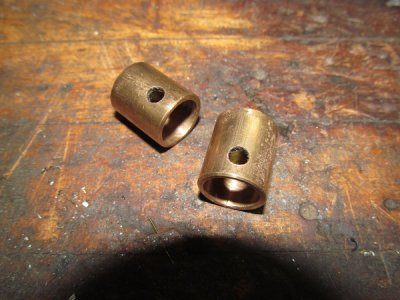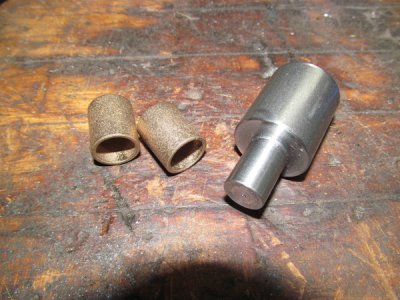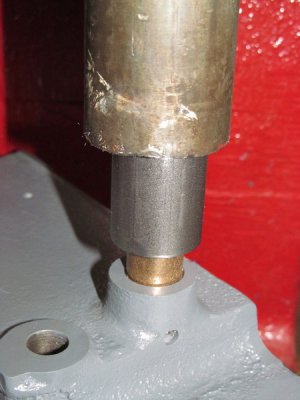I started taking a closer look at some of the parts on this saw and have discovered some issues. First up is the pinion gear and shaft.
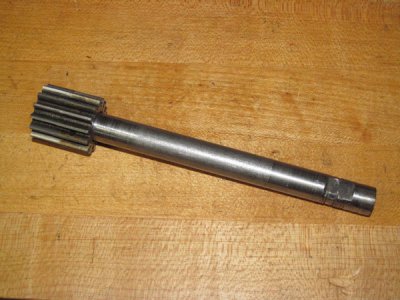
The large pulley that fits on the end of the shaft worked loose and the setscrew chewed up the end pretty bad:
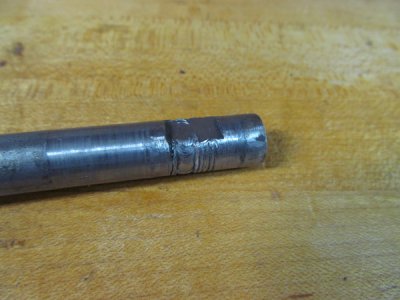
The pinion gear is just pinned to the shaft. Clausing still sells the whole assembly as a unit for $74, which isn't really that bad when you think about it. But instead, I bought a length of turned, ground, and polished steel shaft, cut it to length, and milled a couple of flats on one end at my Atlas milling machine:
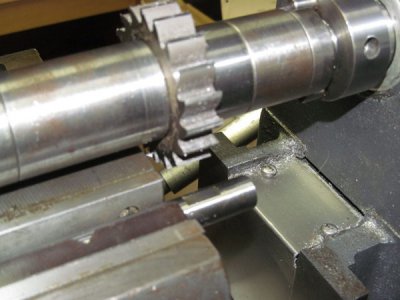
The new shaft alongside the old one:
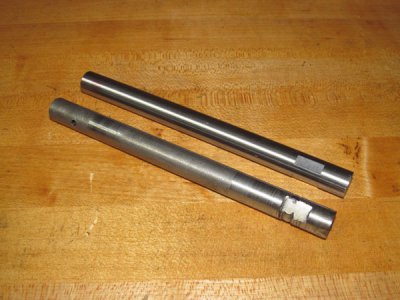
Unfortunately, while I was milling the flats, the motor on my milling machine started making a really bad howling noise. I didn't bother to take a look at the motor when I went through my milling machine a couple of years ago, so I pulled the bearings and sure enough, one of them was bone dry and crunchy. So now I'm out of commission until the new bearings arrive. One project always seems to lead to another:
